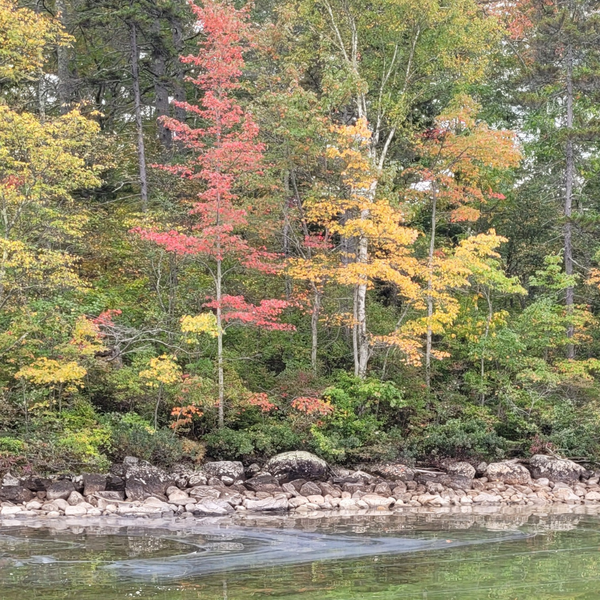When area residents noticed scum-like material accumulating in an area of Newfound Lake (pictured right), they contacted NLRA with their concerns. Our team responded quickly, collecting samples for analysis by the NH Department of Environmental Services (NH DES). The results confirmed it was not a harmful bloom.
Sightings like this are important to investigate. Cyanobacteria can appear in any season, and timely reports help us act fast to protect public safety.
What are Cyanobacteria?
Cyanobacteria, sometimes called blue-green algae, occur naturally in freshwater worldwide. When they grow in high concentrations, called blooms, they can be toxic to people, pets, and wildlife. Harmful blooms also threaten water quality, the local lake-based economy, and property values. Reports of these blooms are increasing across New Hampshire, and warmer temperatures combined with pollution from stormwater runoff make them more likely to occur.
How to Identify Cyanobacteria Blooms
Blooms can look like scum, globules, or a swirling blue or green “paint spill”. See examples from NH DES.
If You Suspect a Bloom
Alert us! Call 603-744-8689 or email Paul@NewfoundLake.org with photos and approximate location.
Complete a Cyanobacteria Bloom Report with NH DES.
Wash your hands if you touched the water.
Until the water has been confirmed safe, do not wade, swim, or drink the water, and keep pets and livestock out of the water.
NH DES monitors cyanobacteria blooms and issues advisories when cyanobacteria levels are high enough to be toxic. Current swimming alerts, advisories and warnings can be found on NH DES Healthy Swimming Mapper.
Keeping Newfound Bloom-Free
Newfound has yet to experience a harmful cyanobacteria bloom. The best way to ensure it stays that way is to protect Newfound's water quality. Minimize stormwater pollution on your property and support our work to protect its clean, clear water.
